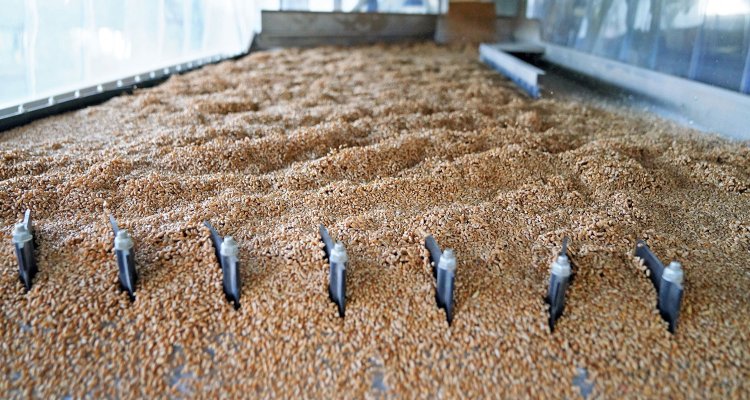
Project
Call for partners: Imaging and AI models for Fusarium detection in cereals on conveyor belts
Mycotoxin contamination in wheat and maize is a global challenge for food and feed security and safety. Due to climate change, the geographical contamination zone is expected to move towards northern latitudes globally, also in Northern Europe. Mycotoxin contamination in small grain cereals can lead to safety incidents, animal and human health problems and economic losses. The fungal growth and mycotoxin production can occur during critical pre-harvest crop growing stages as well as post-harvest storage, transportation and transshipment. Conditions favouring fungal growth may frequently occur throughout the supply chain. A realisable precise fungal/mycotoxin detection and sorting system is therefore needed in different stages of the international grain supply-chain, to ensure food and feed quality, safety and reduce waste and economic losses.
Aim
The proposed project aims to develop a prototype-system to monitor and predict food safety hazards (mycotoxin caused by Fusarium spp.) using multi-/hyperspectral imaging on a conveyor belt to explore and model the correlation between the multi-/hyperspectral image and the actual mycotoxin concentration, measured through ‘conventional' lab-analysis. Ultimately, such a technique enables effective and efficient post-harvest sorting and improves safety and quality management for both food and feed.
Approach and Scope
The WUR team (Wageningen Food Safety Research and Wageningen Food & Biobased Research) is experienced in developing mycotoxin prediction models, analysing spectral images, object detection using artificial intelligence and setting up (robotic) prototypes for post-harvest applications and food processing. In an ongoing PPP-project called “ToxinImage”, we successfully developed a machine-learning algorithm to separate fusarium-contaminated winter wheat ears from the healthy ones in the field using hyperspectral images. In the new project, we will move to post-harvest and use a similar algorithm to identify fusarium-contaminated wheat or maize kernels on a conveyor belt.
The project is expected to lead to:
- AI models for fungal prediction in wheat/maize kernels using spectral images on a conveyor belt
- Prototype (TRL 4) of using spectral cameras, sensors and AI models on conveyor belts for food and feed safety and quality monitoring and prediction.
- Significant reduction of the costs and time of fungal/mycotoxin prediction and management
- Applicable technology for any region and industry that is interested in fusarium contamination management.
Invitation to join
Companies along the international grain supply-chain, aiming to improve their quality-assessment and quality assurance systems for better food and feed safety and quality, are invited to join this consortium. Companies active in grain-, food- and feed production or who provide technologies on spectral imaging are more than welcome to join this consortium.
In return for 50% private in-cash and in-kind (time, equipment, research-materials) contributions to the project, 50% subsidy from Dutch Government is available as WUR research capacity. Interested parties are gladly invited to share their ideas in order to provide direction to the desired research activities in the intended proposal.